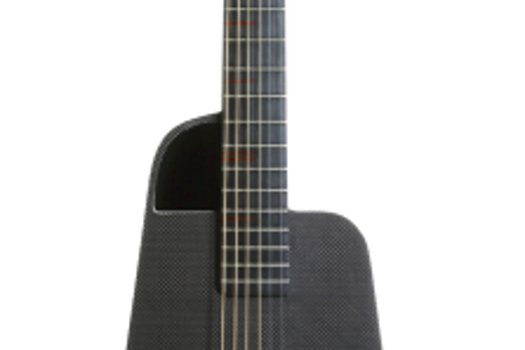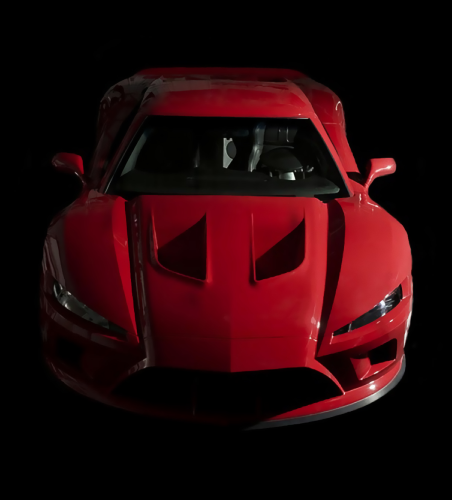



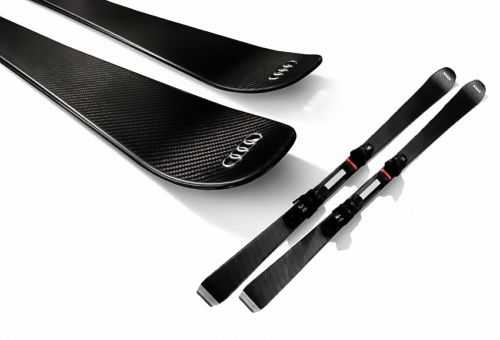
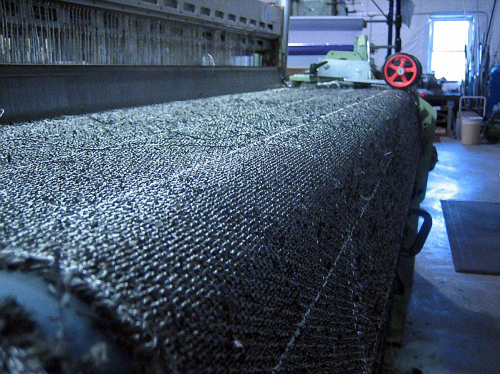
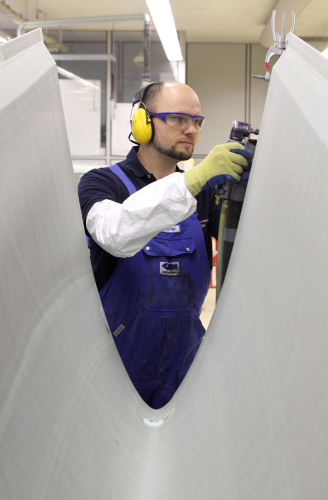
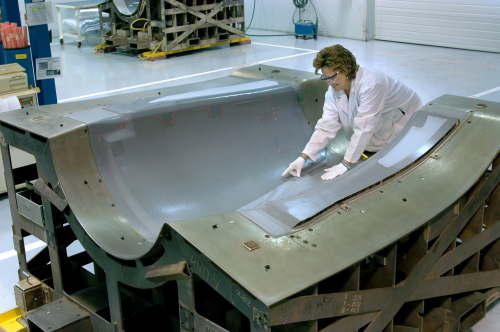

Carbon fibre supplier SGL Group of Germany announced in its latest financial report in November that, despite a recent recovery in demand, the market for carbon fibre continues to face temporary overcapacities due to the numerous delays in new aircraft projects, delayed investments in wind energy, as well as declining demand in sports and consumer applications.
“This has resulted in an increased competitive environment with temporary negative impact on prices and volumes,” relates SGL. “The recent increase in demand, however, has led to prices stabilising, albeit at still unsatisfactory levels. Further price increases are necessary in 2011,” the report notes. The company also says that in recent months it has improved the structure of its precursor supply with the addition of two independent production sites.
Long delays in Boeing’s 787 Dreamliner programme have contributed to the supply and demand imbalance. Boeing announced in January that it expects delivery of the first Dreamliner in the third quarter of this year. The 787 programme has been gradually returning individual aircraft to the flight test programme. Four have been subjected to extensive ground testing and a thorough review to ensure their readiness to return to flight, says Boeing.
Demand on upswing
Leading US carbon fibre supplier Zoltek, while reporting a loss in the first quarter, reports that sales for the quarter were up 14%, reflecting business with new customers, which offset soft demand from large wind energy customers.
“Worldwide, we are seeing the beginning of a strong resurgence in demand for carbon fibres from wind energy, our primary application area,” noted Zoltek Chairman and CEO Zsolt Rumy.
He reports that over the past two years, there has been a great deal of progress in wind energy in China, India and other countries as high-tech companies have moved in the direction of larger and more efficient wind turbines.
“Wind energy is continuing to go global and entering a new phase of rapid growth,” adds Rumy, noting that Zoltek produces the majority of commercial carbon fibres used in the super-long blades that power advanced wind turbines.
Toray Industries recently announced that it has decided to resume construction of a carbon fibre production facility in Japan in anticipation of a recovery in demand. The new plant is expected to go online in September 2012. Toray and its Korean subsidiary are also building a carbon fibre production plant in Korea to ensure a stable domestic supply there. It is expected to go online in 2013.
In January, Toray and Daimler AG announced a joint venture to manufacture and market carbon fibre reinforced plastic (CFRP) automotive parts. Toray has been working on design and molding processes, while Daimler is taking responsibility for designing parts and developing technologies for joining of the parts, the companies announced. The result is said to be an innovative technology for mass production of CFRP parts with a significantly shorter moulding cycle. Toray is also heavily invested in aerospace, having signed a 16-year contract in 2006 worth at least US$6 billion to supply CFRP materials to Boeing’s Dreamliner programme.
Mitsubishi Rayon Company’s Carbon Fibres and Composite Materials business suffered a loss in 2010, but the company has decided to resume work on an additional carbon fibre plant, which will add annual capacity of 2700 tons. Construction had been suspended pending a recovery in demand. Last year the company formed a business alliance with SGL Group to produce precursors for the manufacture of carbon fibres and fabrics for the BMW Megacity vehicle.
US carbon fibre supplier Hexcel Corp reported improved sales in its 4th quarter report, noting that a significant number of orders received in 2010 by its commercial aerospace and wind customers, provided a “much improved environment for our markets.” Chairman and CEO David Berges notes: “We are pleased with our 2010 results, especially since we started the year with a great deal of uncertainty about the direction of our core markets.” Hexcel expects sales to continue rising in 2011.
In Turkey, carbon fibre producer AKSA Akrilik Kimya has decided to increase the annual capacity of its existing line by 300 tons and to build a second line to add 1700 tons of capacity. In India, Kemrock Industries and Hindustan Aeronautics Ltd recently announced plans to form a joint venture to develop and manufacture CFRP prepregs for aerospace and defence applications.
End of the autoclave?
The development of resin systems and processes that can eliminate autoclave curing of CFRP materials – while delivering the same performance and material characteristics of autoclave-cured parts – is a top industry priority. Autoclaves for large parts are expensive to build and expensive to operate, requiring huge amounts of electrical energy. Plus, the process is slow, resulting in long queues of parts awaiting final cure. Out-of-autoclave (OOA) processing promises a much less expensive alternative with shorter cycle times.
A novel OOA process took the top prize in the 2010 Student Manufacturing Design Competition of the American Society of Mechanical Engineers. Two mechanical engineering doctoral students at Rensselaer Polytechnic Institute, Troy, New York, developed an innovative Specialised Elastomeric Tooling (SET) process for curing advanced composites without the use of an autoclave.
The process involves curing a composite laminate by pressing the material between heated, rubber-lined moulds. Heating occurs quickly because the composite material is in direct contact with the tool. Computer modeling software is used to optimise the shape of the moulds, reports Rensselaer. The SET process is said to use up to 1000 times less energy than typical autoclave curing.
Resin and prepreg suppliers have intensified their efforts in OOA technology. Cytec Engineered Materials, Tempe, Arizona, USA, has developed CYCOM® 5320-1, a toughened epoxy resin prepreg system specifically for OOA manufacturing. Cytec developed the material to enable production of large, primary structures without the autoclave costs and size limitations.
The low-temperature, vacuum-bag curing CYCOM material offers the mechanical performance equivalent to 350°F (180°C) autoclave-cured, toughened epoxy prepreg systems, says the manufacturer. It offers the flexibility to vary the cure cycle from 200°F for 12 hours to 250°F for 3 hours (followed by a 350°F two-hour, free-standing post cure.) Low-cost tooling and OOA curing offer the advantage of using one material for both prototype and high-rate production, adds Cytec.
The National Center for Advanced Materials Performance at Wichita State University, Kansas, USA, is currently evaluating Cytec’s 5320-1 prepreg system as well as Cytec’s 5276-1 high-toughness prepreg system in its material qualification programme. Funding for the programme is provided by the US Air Force Research Laboratory.
The US Air Force is also funding a programme to qualify the patented OOA Quickstep curing technology developed by Quickstep Holdings Ltd in Australia. Vector Composites and Quickstep Composites LLC, both based in Dayton, Ohio, USA, have agreed to jointly promote the Quickstep process for system applications and customers in the aerospace and defence industries of North America. The joint research project is focusing on qualifying OOA bismaleimide and epoxy resin CFRP materials to the F-35 Joint Strike Fighter aircraft.
HITCO Carbon Composites, Los Angeles, California, a subsidiary of the SGL Group, received a contract from Boeing last summer to fabricate three large CFRP spars using OOA processing. The programme is using Cytec prepreg materials with hot drape forming, automated tape layup and hand layup techniques. Improvements in the quality and consistency of composite structures using automated fabrication techniques and non-autoclave processing are expected to help achieve performance and cost targets while expanding the use of composites, HITCO observes.
Advanced Composites Group (ACG), a leading global manufacturer of advanced composite carbon and glass fibre reinforced prepregs, has developed a series of resin matrix systems for OOA curing. ACG’s MTM®45-1 epoxy-based carbon fibre prepreg system has received Airbus qualification in both fabric and unidirectional formats for primary and secondary structures. The toughened epoxy matrix is optimised for low-pressure, vacuum-bag curing at 130°C and full performance after a 180°C post cure.
MTM-45-1 was used in the construction of Virgin Galactic’s WhiteKnightTwo and SpaceShipTwo spacecraft, which in January completed the fourth in a series of high-altitude flights ahead of a planned suborbital spaceflight test. Among other projects, the prepreg system also was used in several formats to manufacture the wing and fuselage frames of the QinetiQ’s Zephyr solar-powered unmanned aerial vehicle. Last summer, that craft broke the record for sustained flight, staying aloft for more than 14 days.
In the UK, a consortium of 22 companies led by GKN Aerospace, has won a £5 million grant from the Department for Business, Innovation and Skills to develop affordable, innovative carbon fibre composite manufacturing techniques for high-performance, high-value products. Members of the consortium, known as i-Composites, will provide matching funds, bringing the total funding to £10 million, for research and development projects across a broad range of focus areas.
GKN, a leading independent supplier of composite structures for aerospace applications, is investigating concepts for automated manufacturing of composites and OOA. Spirit AeroSystems, a manufacturer of aerospace components, is heading a project on heated tooling for advanced OOA resin infusion processing. Simulation specialist Frazer-Nash Consultancy is leading a project on autoclave optimisation to reduce CFRP cycle times.
Other areas being researched by i-Composites partners include process time reduction in compression moulding, 3D weaving, coatings for composites, defect testing and distortion prediction, microwave curing and recycled composites.
Automotive use climbs
CFRP automotive applications are on the rise as auto makers strive to reduce weight. BMW’s Megacity Vehicle (recently renamed the BMW i3) will feature a passenger compartment structural cage and other CFRP components made using an RTM process. SGL and BMW have formed a joint venture to produce the material. Daimler and Toray have also teamed up to produce CFRP parts for lighter vehicles.
Volkswagen and Porsche are working with the government of Qatar to develop CFRP materials and processing systems for automotive components. In late January, VW introduced the third iteration of its 1-litre car – with a CFRP monocoque structure and body panels.
|
Volkswagen unveiled the XL1, the third generation of its 1-litre car concept (1.0 litre fuel consumption per 100 km), at the Qatar Motor Show in January. Fully cloaked in CFRP body panels attached to a CFRP monocoque structure, the plug-in, hybrid-electric, two-passenger car could enter small series production in 2013, according to VW. The high-strength monocoque compartment is designed in the style of a Formula 1 race car, but differing in that it is enclosed on top for additional safety, VW notes. Depending on the type of collision, the load path may be directed through the A- and B-pillars, cant rails and sills, all of which absorb the impact energy. Additional side members and cross members in the front and rear add to the car’s passive safety. The 0.9 l/100 km (226 mpg) car is powered by a 27 hp electric motor and a 48 hp two-cylinder turbo diesel engine and has a 7-speed gear box. Aluminium has been used extensively in the running gear, suspension and brake system, contributing to the light weight of the XL1 – only 795 kg (1753 lbs). Of that, 21.3% or 169 kg (373 lbs) consists of CFRP materials, relates the car maker. The aerodynamic carbon fibre body of the XL1 reportedly cost about US$6800 to produce using the aRTM (advanced Resin Transfer Moulding) process that was developed for CFRP production and patented by VW. The monocoque structure features slightly offset seats for driver and passenger. |
Other carbon fibre-clad vehicles include the McLaren MP4-12C supercar, which incorporates a CFRP MonoCell tub that is moulded as a single piece to protect the occupants. The large, hollow tub weighs only 80 kg (176 lbs). Lamborghini has added more CFRP parts to its Murcielago LP670-4 SV, saving 100 kg (220 lbs).
British sports car builder Noble is said to be nearing production of its M600 supercar, which features the company’s first CFRP body. Weighing 1250 kg (2756 lbs), the car has an officially rated 0-120 mph acceleration time of 8.9 seconds and a top speed of 225 mph. Aston Martin has reportedly delivered the first One-77 supercar to a customer. It is built with a full CFRP monocoque chassis and an aluminium body.
US automotive specialist Mach 7 Motorsports introduced its Mach 7 Falcon with a CFRP body at the 2011 Detroit Auto Show. The company is expected to produce only 15 models a year of the US$200 000 supercar. Chevrolet increased the CFRP content in the 2011 Corvette ZR1, totalling 34 lbs (15.4 kg) – about one-half the weight of glass fibre reinforced panels.
New CFRP materials
Hexcel recently introduced HexTow® IM10 carbon fibre, an intermediate modulus (IM) product, calling it a “true breakthrough” in IM carbon fibre development. HexTow IM10 is said to provide the highest commercially available tensile strength, able to meet the demands of next-generation aerospace programmes and applications. Also new from Hexcel is HexPly® M91 prepreg for primary structures. Supplied as unidirectional (UD) tape, it was designed specifically for automated processing and, in combination with HexTow fibres, is said to provide excellent toughness and tensile performance, both for IM and high strength carbon fibre.
Hexcel has developed a patented process to manufacture continuous rolls of carbon fibre fabric in which the warp and weft yarns are oriented on the bias at ±45°. HexForce® Bias Weave fabrics offer cost and weight-saving benefits, notes the company. They are suitable for prepreg and RTM processing and are available with HS and IM carbon fibres.
Sabic Innovative Plastics offers a high-performance CF compound based on Ultem™ polyetherimide (PEI) resin for aircraft interior parts that is said to be 50% lighter than aluminium and up to 40% stronger. Target applications for the carbon fibre filled Ultem are tray table arms, arm and foot rests and galley components. The resin grades can be extruded or injection moulded, avoiding the need for machining and other secondary processes. They also enable part consolidation, notes Sabic.
Pepin Associates, Greenville, Maine, USA, has introduced a carbon fibre grade of its Disco-Tex® formable textile for low-cost fabrication of complex-shaped composite structures. Tows are cut into discrete lengths and aligned to form a discontinuous tow which is woven into textiles. The carbon fibre reinforced fabric provides unique stretching and forming capabilities since the fibres are able to slip relative to one another. That is an advantage over fabrics made with continuous fibers, which often require cutting and darting when forming complex curved parts, notes Pepin. Disco-Tex is also woven from glass, quartz and ceramics.
New in sports gear
An innovative CFRP golf club application earned Callaway Golf Co the Most Creative Application ACE Award at the ACMA’s Composites 2011 Exhibition and Convention in February. The aft body of the RAZR Hawk Driver is made by compression moulding a carbon fibre compound in a proprietary process called Forged Composite.
|
The production of carbon fibre worldwide remains under the control of Japan and the USA. The four global leaders are Toray (Japan), Toho Tenax (Japan), Zoltek (USA) and Mitusubishi Rayon (Japan), ranked in order of production capacity, according to the Global and China Carbon Fiber Industry Report (August 2010) published by Research in China. Carbon fibre production is dominated by small-tow PAN-based fibres, which are produced by Toray, Toho Tenax and Mitsubishi Rayon. Zoltek deals primarily with large-tow PAN-based materials and has nearly half of that total global capacity, the report notes. China has embarked on the industrialisation of carbon fibre technology and reportedly has 4.3% of the total global capacity. Strong signs of recovery in the USA and Germany signal positive growth of global demand for carbon fibre materials, observes Acmite Market Intelligence in its July 2010 report, World Carbon Fiber Composite Market. “There is strong confidence that the medium- and long-term trend of the market remains upward. Robust growth is expected when the economy revives,” the report says, noting that strongest demand is expected in aircraft/aerospace and wind energy. Researchers at Lucintel relate that supply has increased to the point that some manufacturers now have ample supply of carbon fibre with relatively short lead times to consumers. In its April 2010 report, Growth Opportunities in Carbon Fiber Market 2010-2015, Lucintel predicted that the global carbon fibre market will grow 13% per year through 2015, when the market is expected to reach US $2.3 billion in value. |
The process is said to concentrate over 500 000 fibres per square inch to create a material that is lighter and stronger than titanium. CFRP composite makes up 67% of the clubhead, enabling engineers to distribute weight more efficiently to produce an exceptionally lightweight driver head with optimal mass distribution for long drives, says Callaway.
For high-performance ski buffs, DPS Skis recently introduced what it calls the world’s first pure carbon fibre sandwich construction ski. CFRP laminates and nanotech resins are used to produce the skis around a wood core. The laminate is said to provide 20% more torsional stiffness than a wood/fibreglass construction, says the manufacturer, noting that the skis have twice the strength of skis made of fibreglass while weighing half as much. Well suited for ski manufacture, carbon is precisely flexed, doesn’t warp and retains nearly 100% of its flex for the life of the ski, adds DPS.
Another ski made using CFRP has been developed by Audi Carbon Skis and Audi Concept Design, Munich, Germany. Made with a wood core and layers of aluminium and titanium, the ski is encased in a CFRP laminate. Carbon fibres are oriented to achieve optimal stiffness to produce the ski, notes the manufacturer. ♦
This feature was published in the March/April 2011 issue of Reinforced Plastics magazine.
Reinforced Plastics is a controlled circulation magazine. Complete this form to apply for your copy. (The magazine is free of charge to readers who meet our qualification criteria.)


